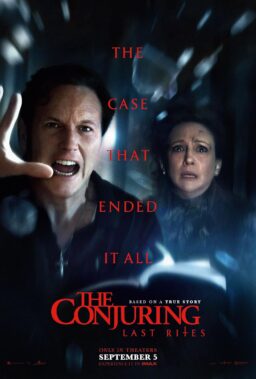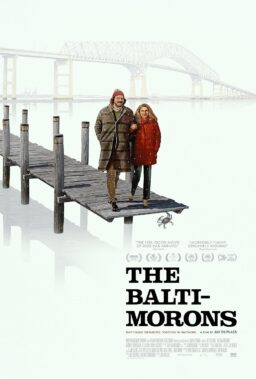One of the big stories on the first Saturday of the 2018 SXSW Film Festival was that the biggest theater at the event featured four films in a row that were introduced by their female directors. Uncoincidentally, I was there for all four—having already covered the fourth, “Blockers,” in a separate review—and it was a rollercoaster of a day in terms of quality, but there was a definite buzz in the spacious, historic Paramount Theater. Most refreshingly, all of the films—even “Blockers”—felt like the product of confident, empowered voices that had something to say that you might not have heard before. One film in particular reworks arguably the most glutted genre of the modern era into something new, empowering, and original. It’s a remarkable, important piece of work.
That film is Julia Hart’s stunning “Fast Color,” a tightwire-act of a film that’s ostensibly a superhero origin story while also feeling like it’s about us mere mortals at the same time. “Fast Color” isn’t quite post-apocalyptic but it’s near-apocalyptic. Hart’s script (co-written with Jordan Horowitz) imagines a world in which it hasn’t rained in years. We finally did it. We broke the planet. Crops have died. Water is more expensive than lodging. Everything looks broken. In this world, we meet Ruth (the radiant Gugu Mbatha-Raw), a woman on the run. She has bloody marks on her wrists as if she’s been restrained, and she hides from human contact. She checks into a seedy motel in the middle of nowhere and has a terrifying seizure. As she does so, a part of the world that never has earthquakes feels the plates shift.
It turns out that Ruth comes from a legacy of women who have what could be called superpowers. On the run from people who want to exploit her powers—the authorities/chase aspect of the film reminded me of “Midnight Special” at times, another emotional sci-fi movie that I love—Ruth makes her way to a home she fled years ago, where we meet her mother Bo (Lorraine Toussaint) and Ruth’s daughter Lila (Saniyya Sidney). We learn that Ruth left when her powers became too dangerous for her stay, keeping the seizures at bay with drugs and booze. And we learn that Bo and Lila have powers too.
As a parent of three, I can attest that children create a stunning mix of empowerment and abject fear, often in the same moment. As cheesy as it sounds, you can look into your child’s eyes and feel like you can do anything. They will give you the strength to do anything. You can also be stricken with fear that you will do something wrong. That you will misuse this power you have been granted. In a nutshell, this is Ruth’s story—that of the power given her by motherhood and how she runs from it, only to realize how important it is in the end. As Hart pointed out in her Q&A, and the film makes crystal clear, “Fast Color” is a superhero film about creation and not destruction. Nearly every MCU movie ends with a massive battle that takes hundreds of lives and destroys cities—destruction for arguable salvation. “Fast Color” imagines a world in which power heals and creates instead, and it’s beautiful to behold.
“Fast Color” comes from a lineage of masterful films that uses sci-fi to tell relatable, emotional stories, but it also feels remarkably fresh. Much has been written recently about how films like “Wonder Woman” and “Black Panther” have redefined the superhero genre and forever changed the landscape. My hope is that enough people see “Fast Color” to include it in the conversation in the same way.

What struck me about “Fast Color” was the confidence of the storytelling, and I’d say the same about Sarah Daggar-Nickson’s brutal “A Vigilante,” a film that feels like it’s coming along at just the right cultural moment that it could become a talking point for female empowerment. It’s a story of trauma, domestic violence and vengeance that’s driven by a fearless, remarkable performance from Olivia Wilde, doing the best work of her career. Whenever the film stumbles narratively—there’s some chronological gamesmanship that doesn’t work and a flawed final act—Wilde is there to pick it up and keep moving it along, just as her character does for the people in the film.
She plays Sadie, a woman we meet putting on a wig, colored contacts, and make-up. Sadie is a vigilante. Anyone who needs help—but primarily women in domestic violence situations—can go through the right channels to find her and, well, get vengeance. She’s not a killer. She’s more of an extractor. She will get the person in need out of their dangerous situation, which is what so many victims of domestic violence can’t do for themselves. And Sadie will use whatever means necessary, including violence. She has trained herself in combat and knows how to force a man to leave his family or rescue a child from a true waking nightmare.
Of course, Sadie does this work because of trauma in her own past. In an early scene, Sadie hears a song that clearly sparks a memory and has a massive breakdown. It’s frightening, and it’s not the last. Wilde gives herself over completely to the most physically challenging role of her career. Sadie is a woman who is all cool when she’s on the job but often screams, cries, and shakes when the trauma that got her here returns in memory. One of the reasons that “A Vigilante” works is that Wilde and her writer/director are careful to treat people who have suffered violence respectfully and honestly. Trauma and violence aren’t just plot devices in this world—they are a part of an ongoing massacre in this country in which men, mostly men, kill women and children. “A Vigilante” could have been B-movie exploitation, but it never crosses that line, handling its difficult subject matter well, and reminding us how incredible Wilde can be in the right material.

Two other actors often excellent in the right material headline the first film I saw on this day of female directors, Melanie Laurent’s “Galveston,” based on the book by Nic Pizzolatto (“True Detective”). Ben Foster and Elle Fanning play a pair of lost souls at the bottom of the country with nowhere else to go. At first, it feels like “Galveston” comes from that tried-and-true genre of the oil-and-water road movie, but it’s more of a “stuck” movie, a story of people whose time may have run out at very young ages. Some of the darker, more brutal edges of the film hinder it at times as Laurent’s poetic visual eye and the stark ugliness of what happens here can feel at odds. But even when the movie struggles with a lead character who is kind of reprehensible, Foster and Fanning hold it together.
Foster plays Roy Cady, a cog in a criminal enterprise in New Orleans. In the opening scenes, his boss (played by Beau Bridges) gives him an assignment that goes very wrong. Shots are fired, people die, and when the smoke clears, the only one left is a hooker named Raquel (Fanning), and she’s tied to a chair. Roy lets her go, realizes that he was sent into a trap, grabs some documents that incriminate his boss for leverage, and the two take off. Raquel asks Roy to stop somewhere before they leave town and, before you know it, there’s a third member of this party, Raquel’s three-year-old sister Tiffany. The trio end up at a motel in Galveston while Roy tries to figure out how to keep them all alive.
Sort of. Roy isn’t that concerned about keeping anyone alive because he’s coughing up blood and has what could be a fatal diagnosis from his doctor—he doesn’t know because he stormed out of the office before the doc could finish going over his x-rays. Suffice to say, Roy thinks he’s got only a little time left, he’s mostly annoyed by Raquel, and he drinks a lot. He’s kind of an asshole. While I admire that Laurent and Foster don’t over-sentimentalize the man—and there’s a worse version of “Galveston” that too boldly plays as redemptive—he’s not someone who’s particularly interesting and certainly not likable enough to hang out with. Foster is very good, and Fanning is even better, but “Galveston” is one of those movies that ended, and I wondered why I had taken the journey. Other than being a part of a historic day at the SXSW Film Festival.












